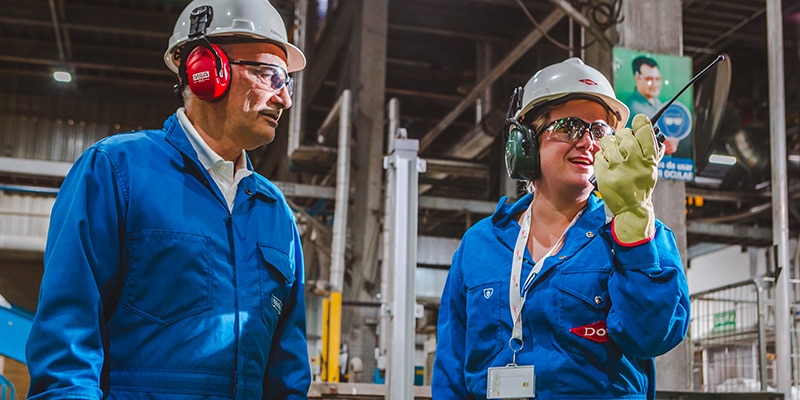
Painting the way towards a sustainable future
The intersection between sustainability and innovation is where the future of material science is heading.
Dow and Tito Pabón turn plants into paint to deliver high-performing, sustainable coatings
Blood, sap, berry juices, charcoal, dried plants and roots… those were the ingredients for the first paints made by humans more than 30,000 years ago. But our ancient ancestors weren’t using paint to give their cave walls a fresh, new color. They were using it as an expression of what they were seeing in the world around them - a new way to communicate. In some cases, it was even used as a means for survival to warn others about potential danger or mark their territory. Early humans didn’t just use the environment around them, they depended on it.
Moving from theory to practice
Everything except our dependency on nature. In the world of coatings and paints, we’ve traded in berries and sap for state-of-the-art research labs and manufacturing processes. But as we continue our journey for progress and innovation, it is critical that we continuously look to our natural world to find ways to make our products and processes more sustainable. We need to demonstrate as an industry that investing in nature pays off.
The paint of the future

For materials science companies, like Dow, sustainability can mean a lot of different things depending on what you are trying to achieve. For coatings, our goal is to create high-performing, sustainable products. That means the products we develop need to meet consumer demands while also having a neutral or positive impact on our environment.One way to do that is to dust off the playbook used by our ancestors and incorporate plants into the production process. And that’s exactly what our teams in Latin America did. Dow, in collaboration with Colombian paint manufacturer, Tito Pabón, developed a new, first-of-its-kind bio-based acrylic emulsion made with carbon from plants.
The innovation was leveraged from our colleagues in Asia Pacific, where Team Dow first developed bio-based binders for paints
Through collaboration and sharing lessons learned, our team in Asia Pacific was able to help our Latin America team create and commercialize a similar product that was tailored to local regional needs.
The product is USDA bio-preferred certified and allows paint producers to partially replace petroleum-sourced raw materials with bio-based materials, while also offering better binder performance compared with a fossil fuel-based equivalent.
In addition to surface protection and great aesthetics, bio-based binders can be designed in interior paints to have low VOC, low odor, low emissions and abate air pollutants such as formaldehyde to improve indoor air quality. Durable paints with bio-based binders help advance a circular economy by minimizing our carbon footprint, reducing repainting frequency and lessening the material use to protect architectural surfaces over their lifecycle.
The intersection between sustainability and innovation is where the future of material science is heading
To get there, we need to value our environment and learn from it.
While we may never go back to painting on cave walls with berries, there is still a lot we can learn from the past to create coatings for the future.
Sarah Eckersley, Global Director R&D / TS&D, Coatings and Performance Monomers





